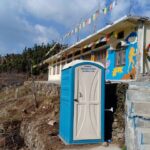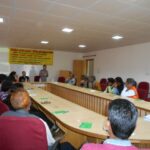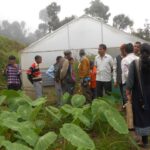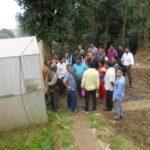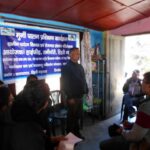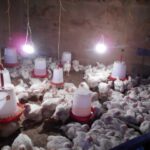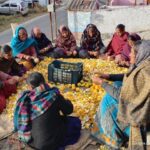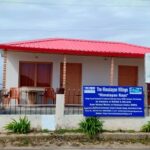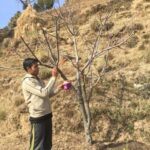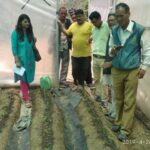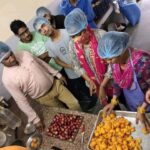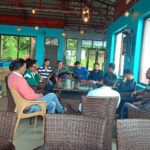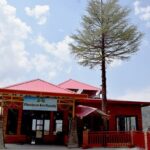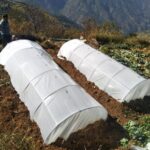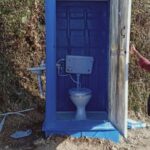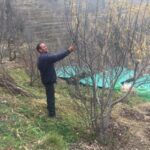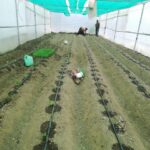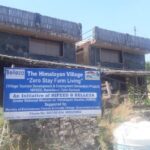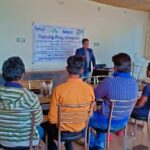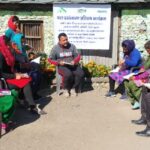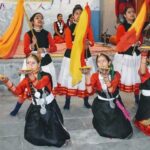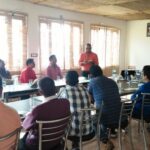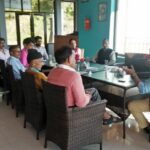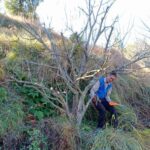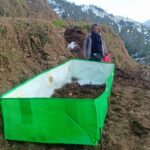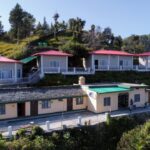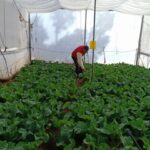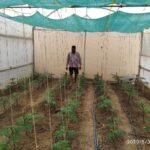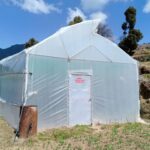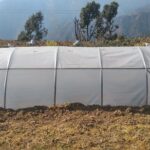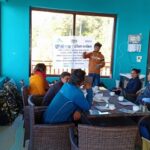A PILOT PROJECT FOR PROMOTION OF VILLAGE TOURISM IN THE OUTER PERIPHERY OF TEHRI DAM
A PILOT PROJECT FOR PROMOTION OF VILLAGE TOURISM IN THE OUTER PERIPHERY OF TEHRI DAM TO ENSURE SUSTAINABLE LIVELIHOOD OPTIONS TO YOUTHS AND WOMEN BY PROTECTING ENVIRONMENTAL AND LOCAL CULTURAL HERITAGE UNDER NATIONAL MISSION ON HIMALAYAN STUDIES (NMHS)
INTRODUCTION AND BACKGROUND OF THE PROJECT
The state of Uttarakhand faces a formidable challenge characterized by the prevalence of absentee landlords and the state of dilapidated housing. This confluence of issues has given rise to a scenario where local youth are compelled to migrate to urban centers or, in some cases, grapple with the constraints of makeshift accommodations in hotels. To tackle this multifaceted challenge head-on, the Himalayan Institute for Education, Environment and Development (HIFEED) has meticulously developed a comprehensive project with the intent of fostering small-scale village eco-tourism. The core objective of this visionary project is to catalyze the transformation of a cluster of five villages located within a radius of approximately 15 km. from Tehri Dam into a vibrant village tourism destination. This strategic initiative aims to not only directly improve the socio-economic conditions of 50 families but also to indirectly establish a network of employment opportunities benefiting approximately 2,000 local residents. A distinctive facet of Uttarakhand’s landscape lies in its limited industrial development, a characteristic that, in turn, contributes to a dearth of viable employment prospects. This pervasive scenario compels a significant portion of the youth to migrate to urban areas in pursuit of livelihoods. The intrinsic potential of Uttarakhand’s tourism industry remains largely untapped, with the bulk of generated income flowing into the coffers of hoteliers, shopkeepers, and tour operators. Moreover, the rapid surge in tourist footfall is exerting undue stress on the delicate Himalayan ecosystem, thereby tarnishing the very charm of its natural wonders.
In order to redress these interconnected concerns, HIFEED has undertaken the momentous task of mobilizing communities by fostering self-help groups (SHGs) in the Tehri Garhwal district. These empowered groups have been equipped with training and resources to initiate income-generating activities. Through meticulous surveys and exhaustive deliberations, the avenue of village tourism has emerged as the most viable solution. The project embarks on a two-fold mission: to harness the potential of eco-tourism as an instrument for uplifting Below Poverty Line (BPL) families within the Tehri district while concurrently safeguarding the fragile environment and nurturing latent tourist attractions. A pivotal aspect of this visionary endeavour envisions a transition from conventional city-based hotels to community-managed guest houses. This transformative shift holds the potential to empower local communities to augment their capacity and assets, facilitating the seamless provision of requisite services to visiting tourists. In essence, this shift would trigger a substantial surge in rural incomes and contribute to a notable augmentation of state revenue. The project’s meticulously designed framework is profoundly attuned to the exigencies of the community it aims to empower. It takes into account factors ranging from community willingness, local resources, age-old traditions, cultural heritage, profitability metrics, and the discernible market potential. Upon successful implementation, this pioneering project stands poised to not only rejuvenate the socio-economic landscape of the Tehri district but also to serve as a blueprint for replication in other districts across the state. In doing so, it harbours the potential to instigate a holistic transformation that transcends physical boundaries and becomes a beacon for sustainable socio-economic development across the entirety of Uttarakhand.
AIMS AND OBJECTIVES OF THE PROJECT
1. Spearhead the initiation and proficient management of eco-tourism projects at the village level, strategically designed to cultivate sustainable avenues for income generation while upholding environmental responsibility.
2. Foster the creation of employment opportunities, specifically tailored to address the needs of unemployed youth within the community, thereby contributing to their empowerment and holistic growth.
3. Empower women by enhancing their capacity to take an active role in the preservation and safeguarding of cultural heritage, thereby promoting gender equity and inclusive community development.
4. Introduce cutting-edge agricultural technologies, including the implementation of organic farming practices as well as the innovative employment of poly house and poly tunnel methods. These advancements are aimed at significantly elevating agricultural productivity and fostering sustainable farming practices.
5. Pave the way for the conception and growth of novel business ventures, spanning diverse sectors such as food processing units, poultry farming initiatives, and localized produce markets. This strategic approach is poised to inject renewed vigour into economic progress, contributing to the overall prosperity of the community.
COMPONENTS AND ACTIVITIES OF THE PROJECT
1. Create an integrated and centralized Tourist Information Center (TIC) to optimize and streamline visitor services, offering a hub for comprehensive information dissemination.
2. Strategically refurbish existing dilapidated houses into purposeful and comfortable tourist accommodations, prioritizing guest experiences with thoughtful amenities such as bedding, trekking equipment, refined crockery, and eco-friendly bio-toilets to promote sustainable sanitation practices.
3. Organize specialized training programs to equip local youth with crucial hospitality and tourism management skills, offering exposure opportunities to groom them as skilled tourist guides or hospitality professionals, while also providing comprehensive capacity-building initiatives to excel in preparing local cuisine and culinary offerings.
4. Promote the creation of dynamic cultural ensembles led by women, fostering both the preservation of cultural heritage and women’s empowerment within the community.
5. Introduce innovative poly houses and poly tunnels, enabling year-round vegetable cultivation and bolstering agricultural productivity to enhance food security.
6. Lead a comprehensive village-wide shift towards organic farming practices, promoting environmental sustainability and the production of high-quality agricultural products.
7. Initiate the creation of small-scale poultry units focused on providing high-quality eggs and meat for visitor consumption, while also introducing compact fruit processing units to optimize the use of local produce and stimulate economic development.
8. Initiate the establishment of advanced bottling and packaging units, adding value to agricultural and horticultural products and enhancing their marketability.
9. Implement comprehensive rejuvenation strategies to revitalize aging orchards, ensuring the sustained productivity of the agricultural landscape.
10. Spearhead a structured fruit planting initiative, strategically enhancing biodiversity and nurturing long-term ecological equilibrium within the region.
TARGET AREA OF THE PROJECT
The project’s focal area encompasses a cluster of five villages located within the Chamba-Mussoorie Fruit Belt. This region has been selected as the project’s target area due to its considerable potential in the tourism sector.
TARGET GROUPS AND BENEFICIARIES OF THE PROJECT
The project’s intended beneficiaries include individuals belonging to economically disadvantaged segments of society who are involved in the fields of tourism, home stays, and agriculture and horticulture sectors.
FUNDING PARTNER OF THE PROJECT
The G.B. Pant National Institute of Himalayan Environment (GBPNIHE), Ministry of Environment, Forest & Climate Change (MoEF&CC), Government of India, Kosi-Katarmal, District Almora, Uttarakhand was the funding partner of the project.
SANCTIONED BUDGET OF THE PROJECT
The budget for the project has been approved by GBPNIHE in the year 2018, with the sanction order No. GBPNI/NMHS-2017-18/SG-04 dated 26.02.2018. The total budget allocated for the project is Rs. 47,79,000.00 for a period of two years.
OUTCOMES AND ACHIEVEMENTS OF THE PROJECT
The following outcomes and achievements have been established after the successful implementation of the village tourism project:
1. Income generation activities through village eco-tourism have been generated, promoting sustainable tourism practices that are in harmony with the environment and creating employment opportunities for unemployed youths.
2. The capacity of women in the community has been built and they have been involved in maintaining the cultural heritage, preserving traditional practices and customs of the region, while empowering women to take on more active roles in the community’s development.
3. Improved technology for agricultural production, such as organic farming, poly house, and poly tunnel technology, has been provided to increase the productivity and efficiency of the off-season vegetable cultivation, while promoting sustainable and environmentally friendly practices.
4. New enterprises like food processing units have been set up to process locally sourced fruits, small poultry units have been established to provide eggs and meat to visitors, and shops to market local produces have been developed, creating new sources of income for the community, while promoting the consumption of locally sourced and sustainable products.
5. The establishment of a Project Implementation Unit (PIU) has been done, which will oversee the implementation of the project and ensure its effective execution.
6. The establishment of a tourist information centre has been done to provide visitors with information about the local area, including places of interest, accommodation options, and local customs and traditions.
7. Renovation of depleted houses has been done to provide accommodation to tourists. These houses have been converted into guest houses equipped with bio-toilets. Logistic support, such as bedding and trekking equipment, has also been provided to ensure guests have a comfortable stay.
8. Youths have been trained in hospitality and tourism management, tourist guide, as well as in preparing local food and cuisine.
9. Exposure to youths has been provided, allowing them to work as tourist guides or hospitality professionals. By providing these opportunities, the project has helped to create a skilled workforce and promote the sustainable development of the region.
10. As part of the project’s agricultural initiatives, old orchards have been rejuvenated, and fruit plants have been planted. The rejuvenation of old orchards has involved restoring neglected and overgrown orchards by removing dead or diseased trees, pruning existing trees, and replacing missing trees with new ones. This initiative has resulted in a significant increase in fruit production and the preservation of traditional fruit varieties.


